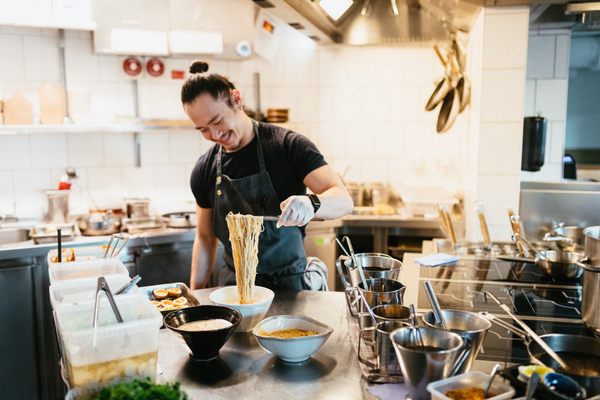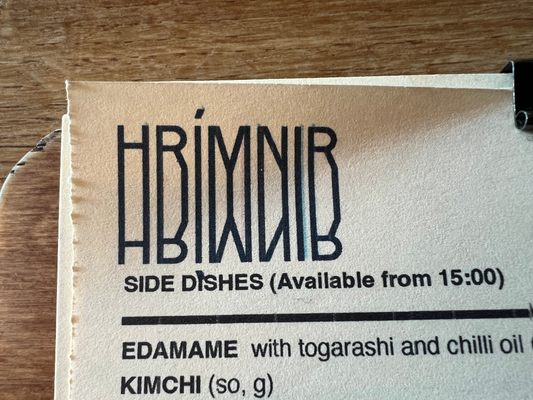About
Jars of house-cured preserved lemons, pickled plums, and pear vinegar line the walls of Hrimnir Ramen, the Oslo eatery that puts a distinctly Norwegian spin on Japan’s beloved noodles. Both Japanese and Nordic cultures rely heavily on the locally sourced produce and the umami-oomph provided by fermentation. In 2019, Norwegian-American microbiologist David Quist opened a wholly unconventional spot that nods to both traditions.
Virtually everything here is made in-house using locally farmed and foraged Norwegian ingredients. The toothsome noodles owe their distinctive flavor to emmer wheat, a heritage grain. The miso, koji, and shoyu are all fermented onsite, often from ingredients that might otherwise wind up as food waste. The deeply flavorful shoyu, for instance, comes from coffee grounds.
While the familiar trappings of a ramen joint are here, the bowls’ contents aren’t like anything one would find in Tokyo. On any given day, the seasonally rotating menu might feature tan tan men cloaked in a rich hazelnut sauce with pickled sunchokes and Norwegian lamb, or perhaps a cold hiyashi chuka ramen dressed with black garlic and miso, then garnished with sea beans, Hanasand tomatoes, and radishes. The compellingly meaty vegetarian ramen gets its earthy backbone from roasted celeriac and ramson oil.
Hrimnir Ramen may be unusual, but as noodle aficionados would attest, it fits the spirit of innovation that has long defined Japanese ramen. For all of the fervor it inspires, ramen is a riffable medium; some of the most celebrated chefs among Tokyo’s 10,000-plus shops are those that flaunt tradition by adding ingredients such as olive oil or Sichuan peppercorns to their broths. Quist’s restaurant isn’t so much an attempt to copy Japanese ramen, but rather a Nordic love letter to it.
Related Tags
Know Before You Go
Ramen may be the main draw here, but the constantly changing selection of starters are no slouch. Get the potato salad if it's on the menu.
Community Contributors
Added By
Published
August 10, 2022













































